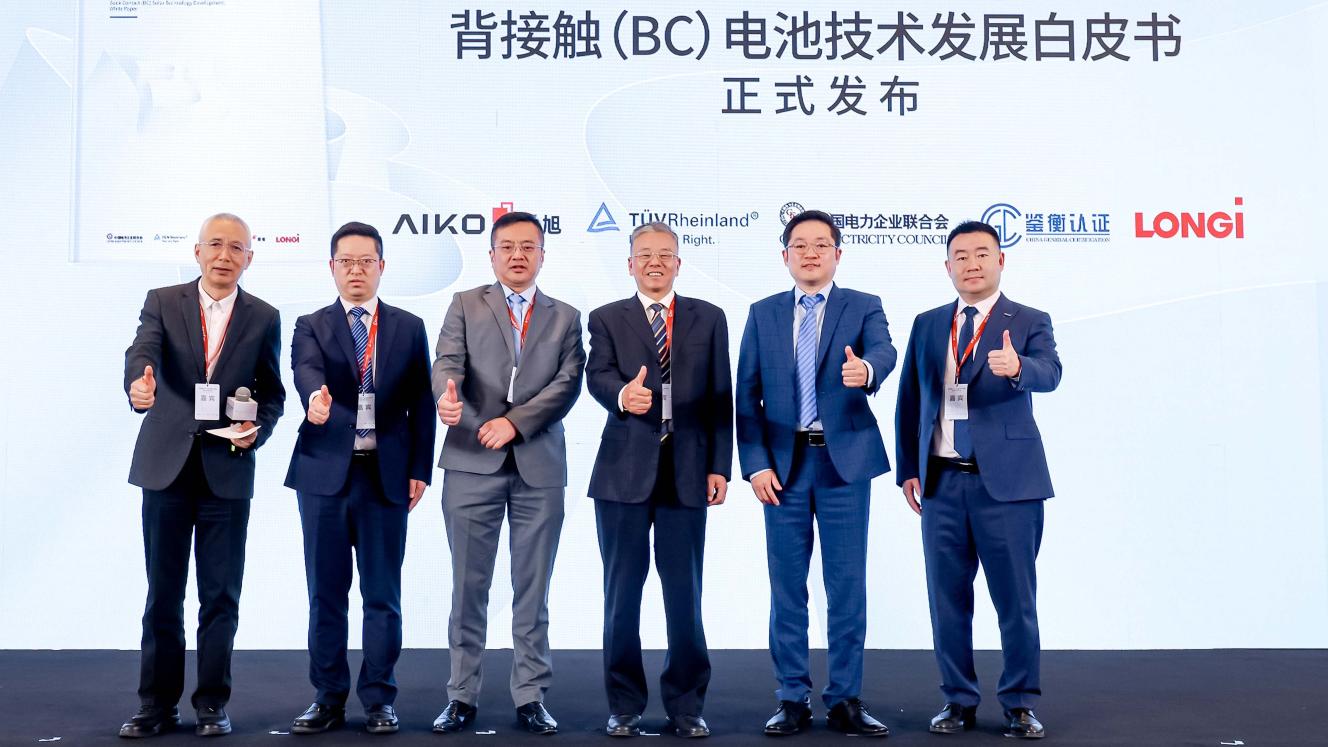China Electricity Council, TÜV Rheinland, CGC, AIKO and LONGi have released a jointly authored white paper focused on back contact (BC) solar cell technology.
“As the world’s first authoritative report on BC technology for the photovoltaic (PV) industry, the white paper systematically elaborates on BC technology’s industrialisation path, core advantages and sustainable development potential, marking the official entry of BC technology – widely recognised as the ‘ultimate form of single-junction silicon solar cells’ – into the large-scale application phase,” LONGi said in a statement.
The BC Solar Technology Development White Paper marks the formal entry of BC technology into its commercial application phase and is supported by multiple Chinese PV manufacturers and certifiers.
It details core technical attributes of BC cells, including the elimination of front-side electrodes, enabling higher light absorption and improved electrical performance. The paper states that BC technology has achieved a certified cell efficiency of 27,81% – 1,3% below the theoretical maximum – as measured by the Institute for Solar Energy Research in Hamelin.
The release event featured input from international and Chinese experts including Professor Martin Green of the University of New South Wales who stated, via video, that interdigitated back contact technology is likely to replace TOPCon as the dominant single-junction silicon cell architecture within five years.
TÜV Rheinland’s Dr Qi Gao provided an overview of international reliability standards for BC technology. CGC’s Gang Zhou presented performance data from demonstration projects while Dr Yongqian Wang (AIKO) and Dr Xixiang Xu (LONGi) discussed technology evolution and process innovations.
The white paper is structured into seven chapters and covers:
- Principles of BC technology and pathways to industrialisation
- Third-party certification and standardisation
- Module-level performance benefits
- Use cases across utility, commercial and residential sectors
- Trends in ecosystem development and global applications













